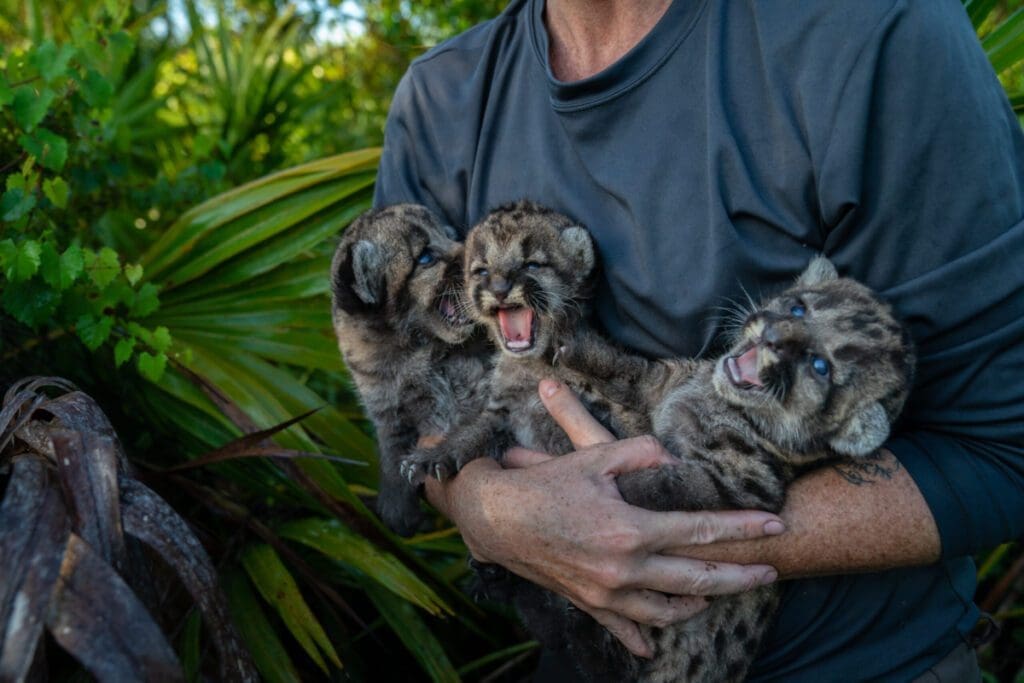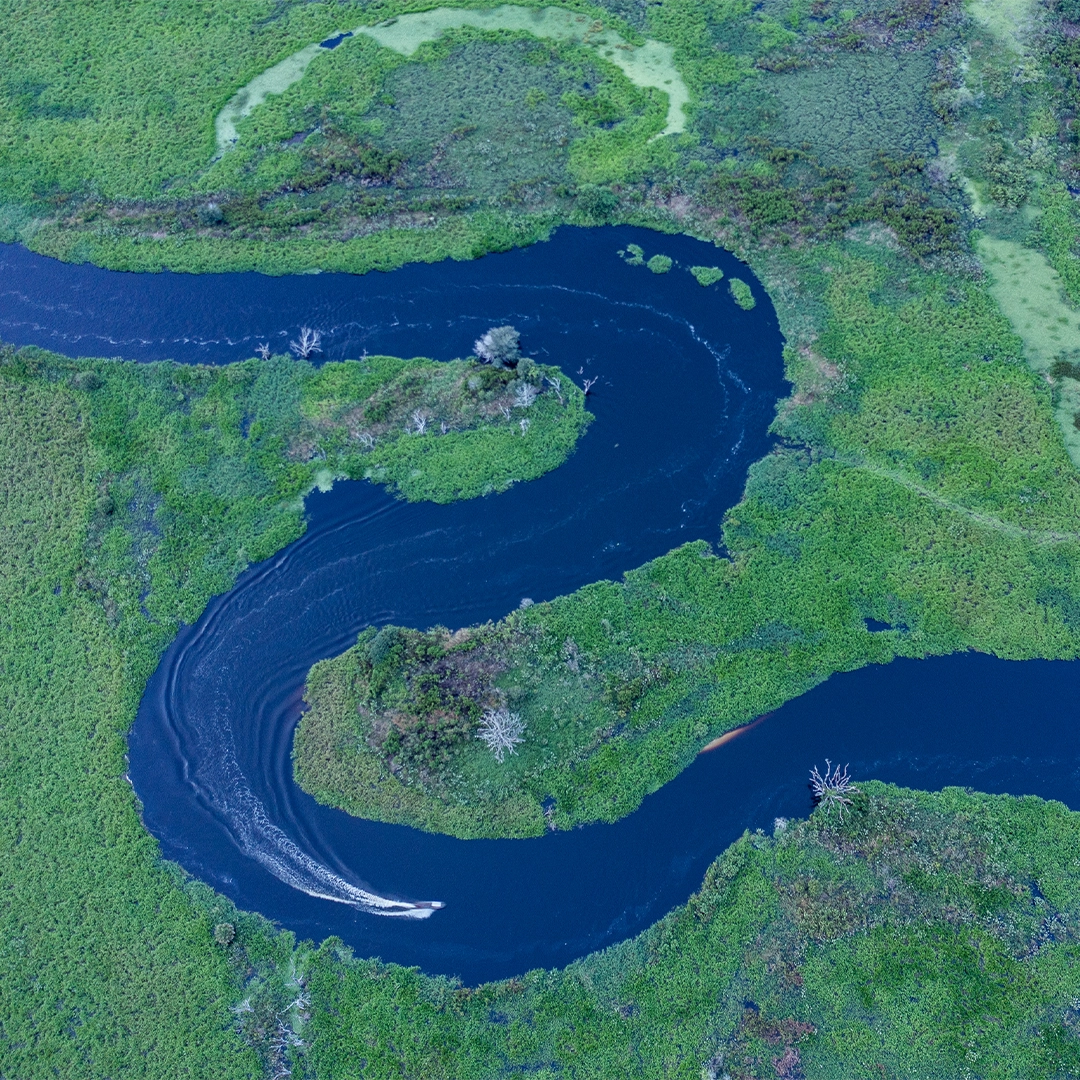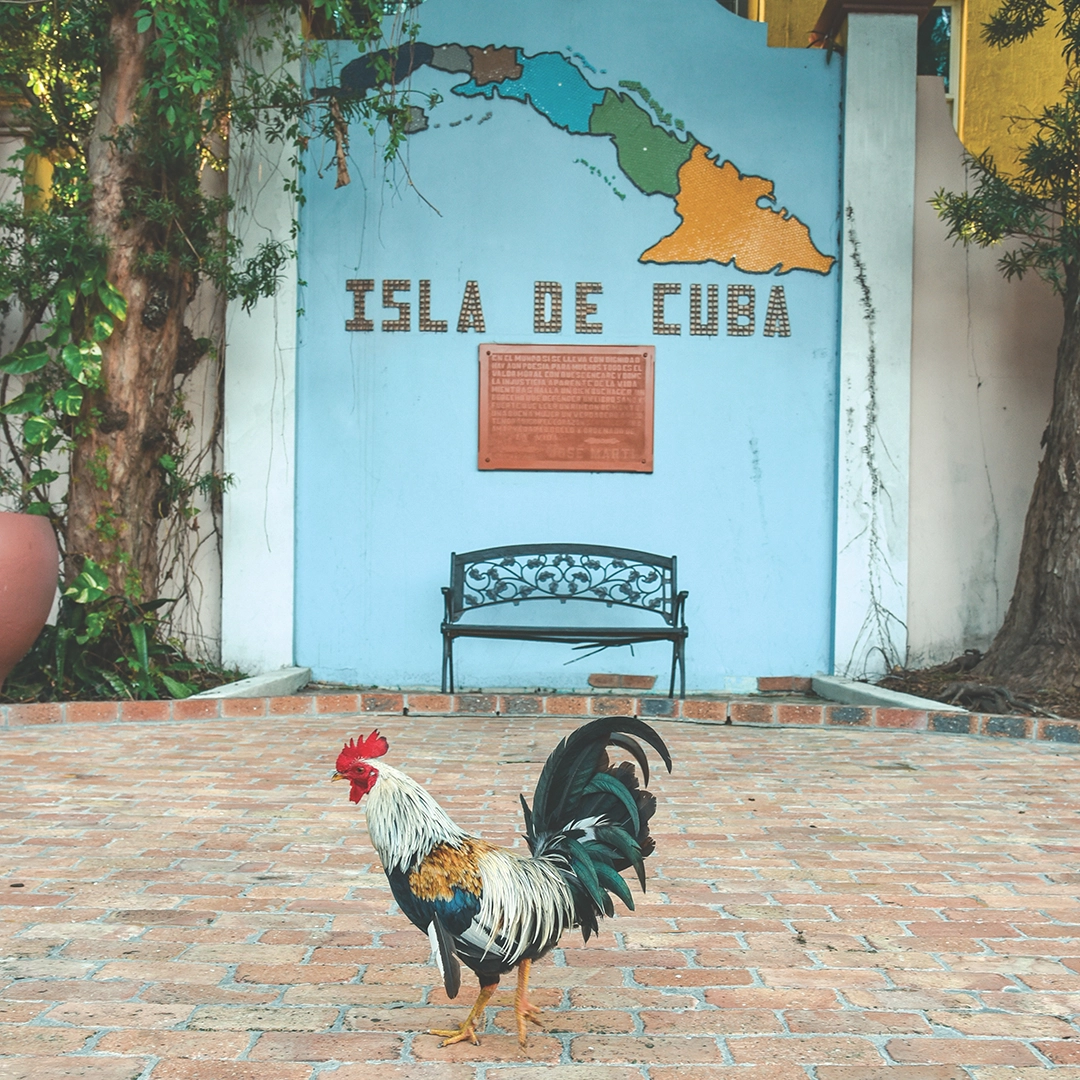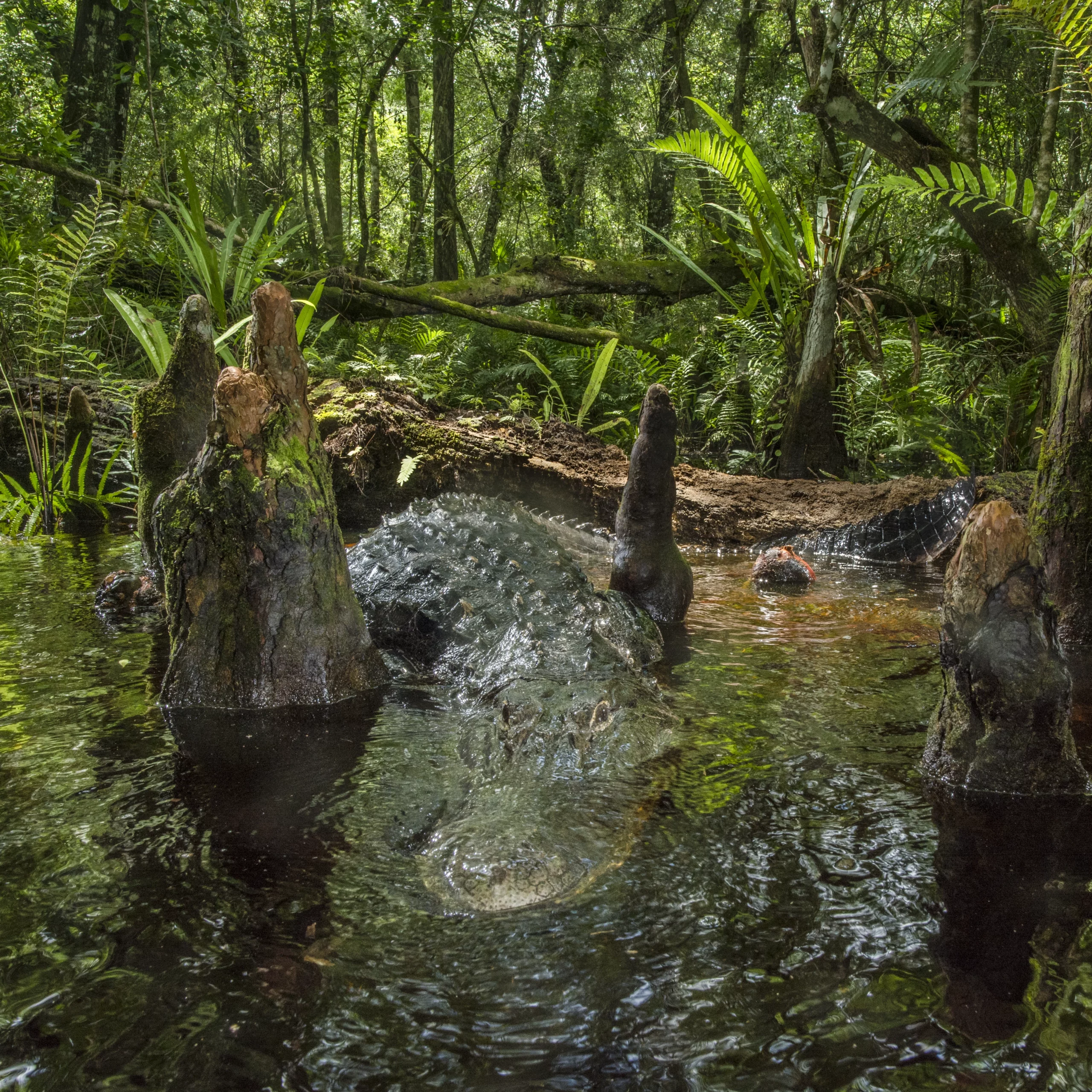by Carlton Ward Jr | May 11, 2023
Carlton Ward Jr. Snapped the Cutest Photo for His Path of the Panther Project
The wildlife photographer gives us a close-up look at some of Florida most vulnerable residents.

We were soaked to the skin from wading through chest-high grass dripping with predawn dew. The biologists and veterinarian on point had stopped to listen when the sound of faint chirps came from beneath a ledge of palmettos. Whispers quieted to hand signals as we drew closer to an inner sanctum of the Florida Wildlife Corridor: a Florida panther den.
Panthers have been stalking through Florida since the last ice age, until hunting, persecution, and habitat loss wiped them out in the eastern United States—save for the swamps of South Florida. By the 1960s, panther numbers had dropped to fewer than 20. Isolated and inbred, the population was sliding toward extinction. At the same time, a conservation ethic was growing in the U.S., and the panther became one of the first animals to receive protection under the Endangered Species Act. Through habitat conservation and genetic rescue, the population has rebounded to nearly 200, but they’re still isolated to South Florida. Panthers are now on the brink of recovery, but only if they can reclaim more of their historic territory farther north in Florida and beyond. This is where my path met the panther’s.
For a decade, I have been advocating for the establishment of the Florida Wildlife Corridor to conserve a connected swath of wildlife habitat throughout the Florida peninsula and panhandle, which would give panthers the territory they need to thrive. The average home range for a single male panther is 200 square miles. The Florida Wildlife Corridor is the only way panthers can reclaim enough of their range to reach sustainable numbers.
Whispers quieted to hand signals as we drew closer to an inner sanctum of the Florida Wildlife Corridor: a Florida panther den.
To support their recovery, the Florida Fish and Wildlife Conservation Commission panther team placed GPS tracking collars on approximately 10 panthers. Data from the collars shows their movements and helps inform land-management decisions. When a collar on a female panther shows her location hasn’t changed for multiple days, it’s a clue she might have a den with new kittens. A mother panther doesn’t get much rest. She provides milk and protection for her kittens during the day, but must hunt for herself at night. She will often start hunting at dusk and come back to the den just before dawn. On some mornings, there’s a short gap of time when mom is still hunting, and the kittens are left alone in the den. That was the case on this damp morning. The tracker showed the mother was still away.
The FWC veterinarian reached down and picked up all three kittens and nestled them in her arms. She was moving toward an open clearing when the moment in this photo presented itself. She and her team spent a few minutes studying the kittens, recording their genders and weights, installing tracking chips beneath their skin (the same technology pet owners use), giving them medicine to strengthen their immune systems and then carefully resting them back in their den. Just in time, too. As we snuck away, the tracking collar on the mother revealed she was getting very close, on her way back to her kittens.





